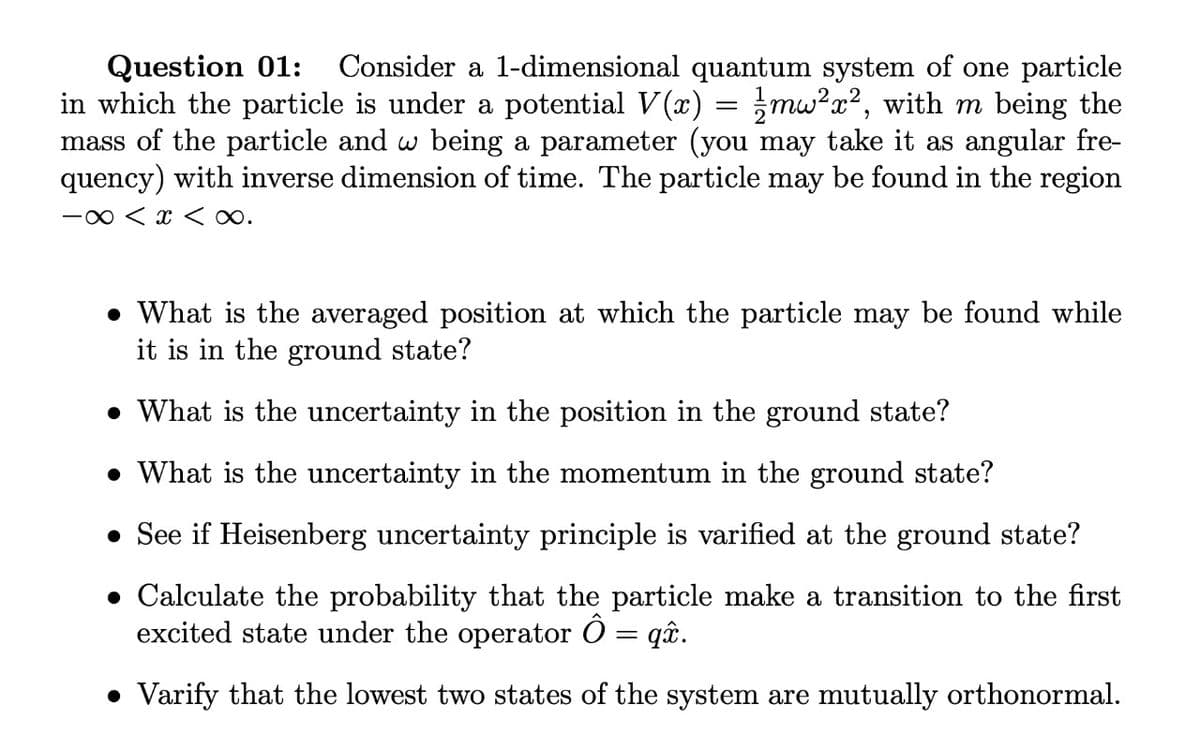Consider a 1-dimensional quantum system of one particle Question 01: in which the particle is under a potential V(x) = ;mw?x?, with m being the mass of the particle and w being a parameter (you may take it as angular fre- quency) with inverse dimension of time. The particle may be found in the region -0 < x < o. • What is the averaged position at which the particle may be found while it is in the ground state? • What is the uncertainty in the position in the ground state? • What is the uncertainty in the momentum in the ground state?
Consider a 1-dimensional quantum system of one particle Question 01: in which the particle is under a potential V(x) = ;mw?x?, with m being the mass of the particle and w being a parameter (you may take it as angular fre- quency) with inverse dimension of time. The particle may be found in the region -0 < x < o. • What is the averaged position at which the particle may be found while it is in the ground state? • What is the uncertainty in the position in the ground state? • What is the uncertainty in the momentum in the ground state?
Related questions
Question

Transcribed Image Text:Question 01:
in which the particle is under a potential V(x) = mw?x?, with m being the
mass of the particle and w being a parameter (you may take it as angular fre-
quency) with inverse dimension of time. The particle may be found in the region
Consider a 1-dimensional quantum system of one particle
-0 < x < o.
• What is the averaged position at which the particle may be found while
it is in the ground state?
What is the uncertainty in the position in the ground state?
• What is the uncertainty in the momentum in the ground state?
• See if Heisenberg uncertainty principle is varified at the ground state?
• Calculate the probability that the particle make a transition to the first
excited state under the operator O = q.
• Varify that the lowest two states of the system are mutually orthonormal.
Expert Solution
This question has been solved!
Explore an expertly crafted, step-by-step solution for a thorough understanding of key concepts.
Step by step
Solved in 3 steps with 3 images
